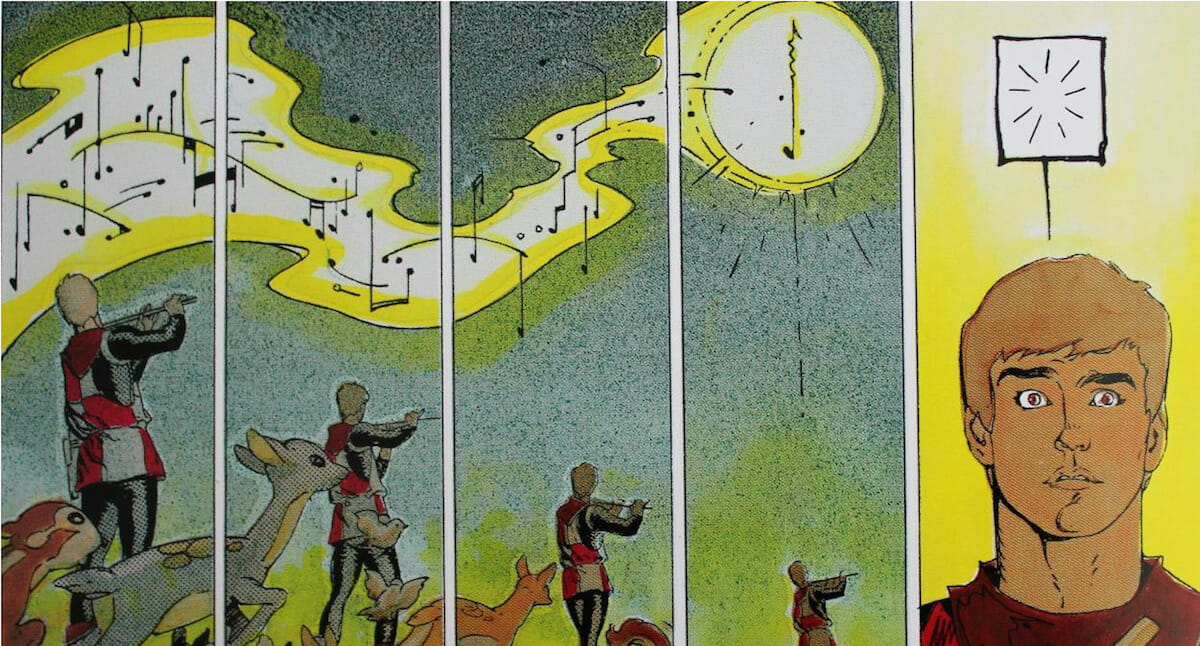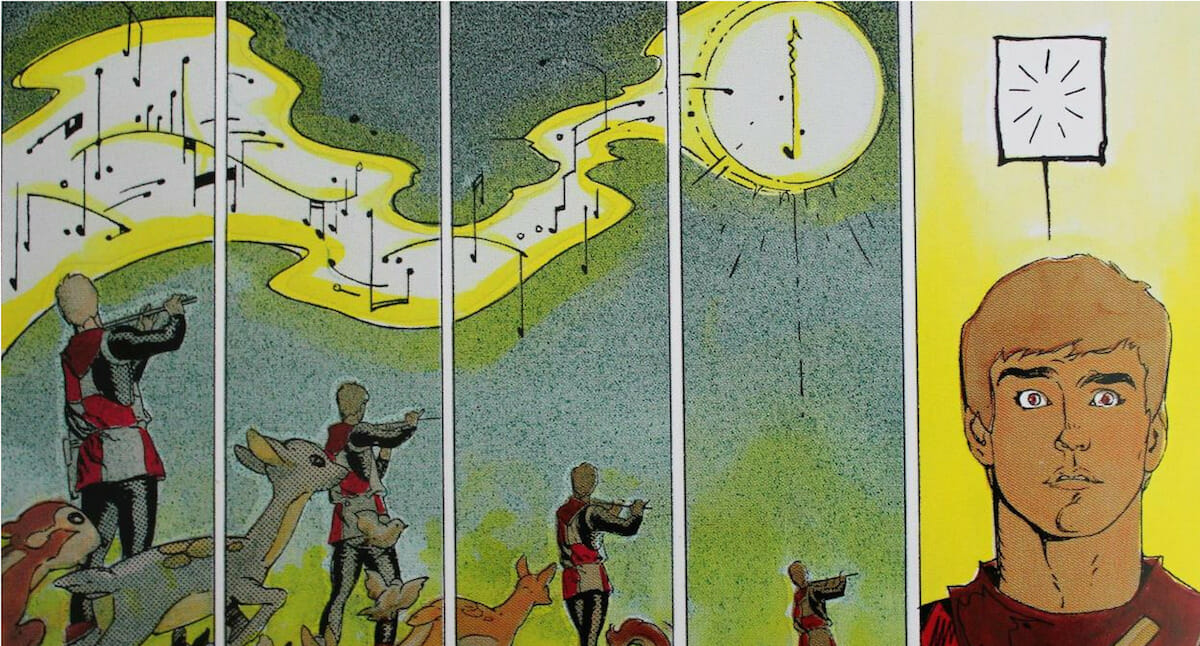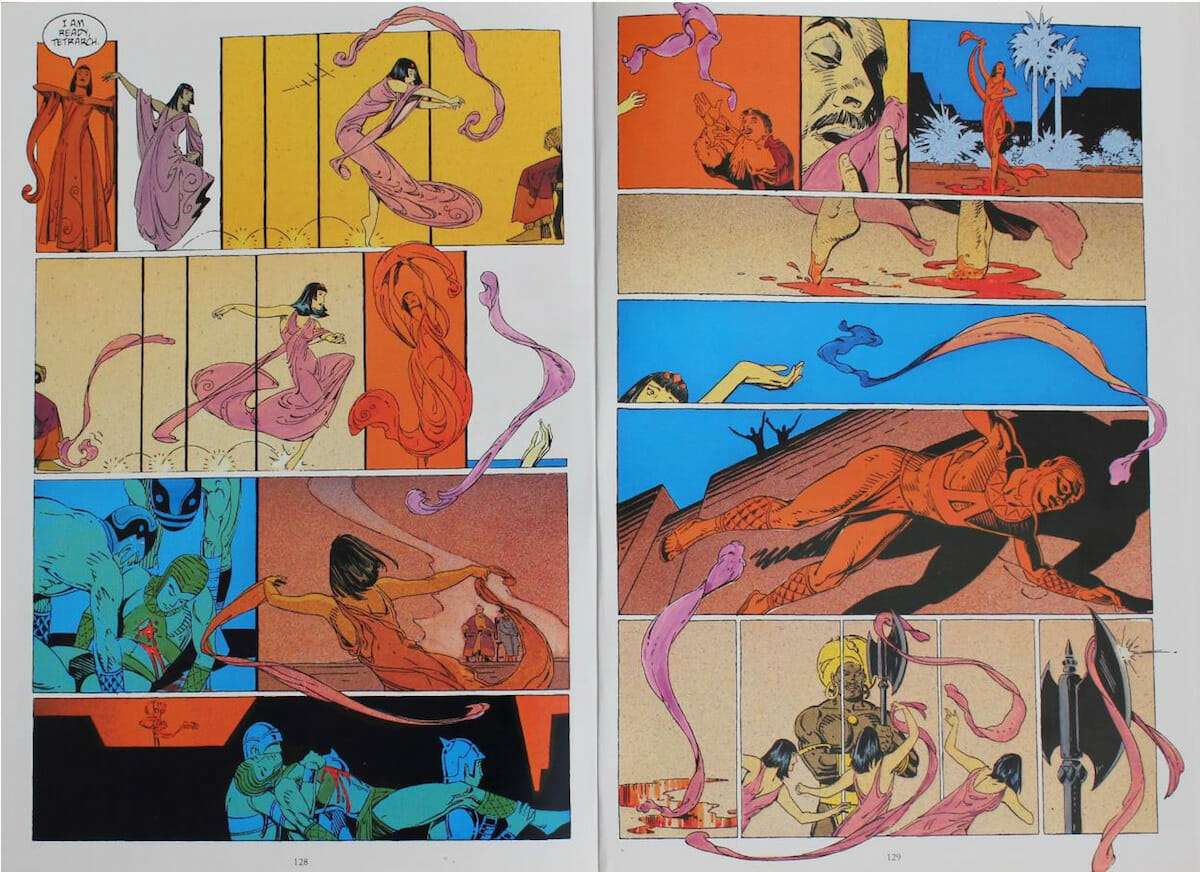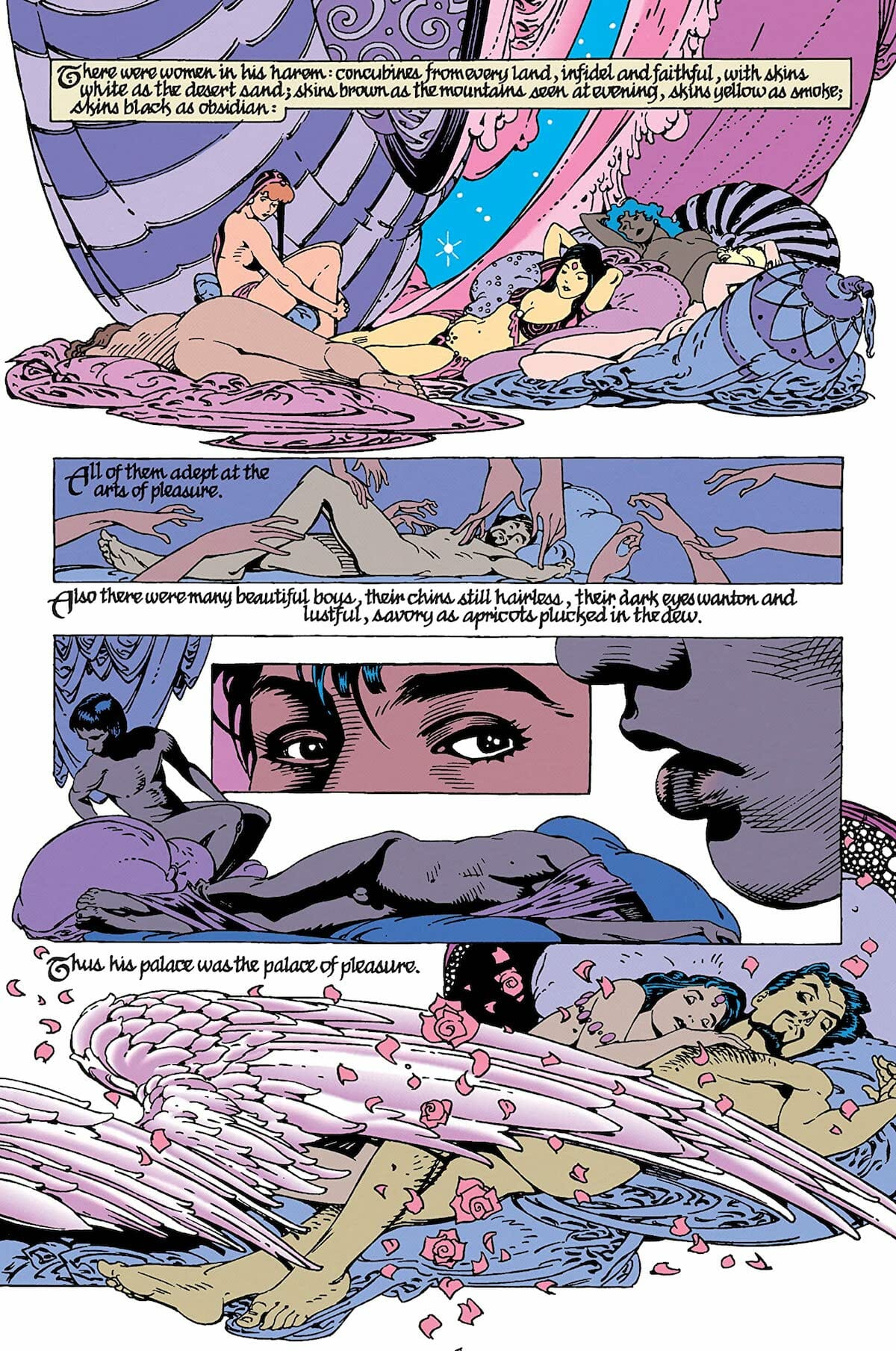If there could be one word to describe the work of P. Craig Russell, it would be “timeless.”
Russell got his start working as an assistant to Dan Adkins back in 1972, the result of what he describes as a chance meeting with Adkins through his father; and throughout a career that celebrates the half-century mark this year, Russell’s work has maintained a focus few creators could even dream of –one that has allowed him to work on the fringes of the comic book mainstream without losing his artistic credibility nor identity, instead allowing the mainstream to slowly, gradually, shape itself around him.
As unlikely as it may seem from today’s vantage point, it was an action-adventure strip with pulp sci-fi overtones that initially made Russell’s name amongst fandom; Killraven, Warrior of the Worlds was, as the name suggests, a sequel of sorts to H.G. Wells’ science fiction classic The War of the Worlds, but taken in an unexpected direction. Created piecemeal by Neal Adams, Roy Thomas and Gerry Conway, the story was set in a near future after Wells’ Martians had returned and conquered the Earth, with Killraven — real name Jonathan Raven, because of course — a muscular resistance leader leading the fight for humanity’s very survival.
Paired with writer Don McGregor — who’d turned heads on his Black Panther stories around the same era — Russell used Killraven as a staging ground to learn the comics craft, with readers being treated to the sight of an artist clearly getting more confident (and more creative) with the form each and every issue. By the time the series finished in 1976, Russell already seemed to have evolved into an artist whose work displayed influences and interests out of step with his contemporaries. Drawing on Art Deco, Disney animation — he’s named Eyind Earle, who painted backgrounds for Disney movies including Sleeping Beauty, as a particular inspiration — and early 20th century illustrators including Kay Neilsen, Russell’s work stood out as something singular and special, even when he’d take on gigs like inking artists like Michael Golden on Batman stories, or Mike Mignola on The Incredible Hulk or The Phantom Stranger.
It was, of course, far away from the superheroic norm for the industry where Russell found his home. In the early 1980s, he worked on adaptations of both Michael Moorcock’s Elric of Melnibone and a number of operatic pieces, for publishers including Marvel, Pacific Comics and Eclipse Comics. It was here that Russell could be seen in full flight, creating pages filled with iconography and visual language that borrowed as much from classic illustration and turn of the century design as it did from Eisner or Kirby (arguably more), with a sensitivity that recalled Winsor McCay’s Little Nemo in Slumberland. It was work that made people sit up and take notice — Night Music–Russell’s irregular anthology of stories inspired by opera from Eclipse, was nominated annually for awards, even as it seemed destined to remain on the fringes of the commercial comics conversation of the era.
Of course, commercial trends change — and, by the early 1990s, there was a significantly larger audience for fantasy based work that didn’t hew closely to the superheroic ideal, thanks to the so-called “British Invasion” and comics like Swamp Thing and The Sandman. When Russell drew the intricate, delicate 50th issue of that latter title, beginning a collaboration with Neil Gaiman that continues to this day, he was given the rare opportunity to create something that looked like his personal work on a series already considered a modern day classic, with both fanbase and promotional power to match, drawing wide attention to what he could accomplish when let loose. Fans responded with enthusiasm, bringing him an all-new audience to impress. He had, in a sense, and entirely unexpectedly, “made it.”
Success didn’t go to his head; instead, it just allowed him more opportunities to do what he loves: He continued working on his ongoing Fairy Tales of Oscar Wilde series for NBM Publishing, and returned to Elric for two separate projects, he took his opera comics to Dark Horse Comics with a long term adaptation of The Ring of the Nibelung — a project that won him Best Artist at the Eisner Awards in 2001 — and he expanded his relationship with Gaiman, adapting a number of prose stories by the author into comics for both Dark Horse and DC: Murder Mysteries, Coraline, Sandman: The Dream Hunters, as well as the ongoing American Gods, the latter of which he writes for a collective of artists led by Scott Hampton, in addition to offering his own illustrative powers. Even now, Russell finds himself a proud contributor to themed comics such as the upcoming adaptation of the famed opera Carmen.
Throughout all of this, P. Craig Russell has retained an innate sense of self, and an aesthetic that feels as if he is entirely disinterested in trends, marketability, or any kind of commercial concern at all. All that matters to him, it feels, is the quality of the work itself — work that is, consistently, beautiful and evocative of a world that is kinder, more considered, and filled with a greater depth of emotion than the one we happen to live in. Whether it’s magicians struggling to contain disaster, lovers expressing their heart’s desires, or horrors lurking just out of sight, Russell makes it all feel like part of the same picture. For five decades, he’s been building worlds that feel very much of the same world, for a career that is, at its heart, timeless.











